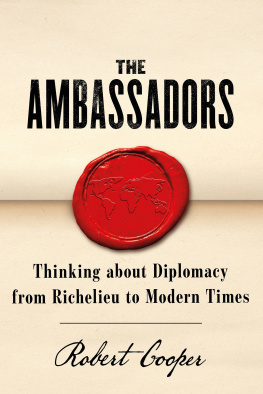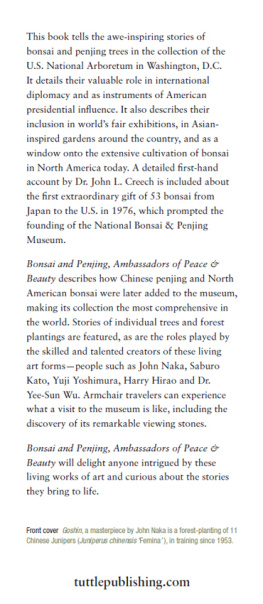Copyright Jonathan Wright 2006
All rights reserved. No part of this publication may be reproduced or transmitted in any form or by any means, electronic or mechanical, including photocopy, recording, or any information storage and retrieval system, without permission in writing from the publisher.
For information about permission to reproduce selections from this book, write to Permissions, Houghton Mifflin Company, 215 Park Avenue South, New York, New York 10003.
www.hmhbooks.com
First published in the UK by Harper Press.
The Library of Congress has cataloged the print edition as follows:
Wright, Jonathan, 1969
The ambassadors: from ancient Greece to Renaissance Europe, the men who introduced the world to itself/Jonathan Wright.1st ed.
p. cm.
1. AmbassadorsHistoryTo 1500. 2. AmbassadorsHistory16th century. I. Title.
JZ1418.W75 2006
327.209dc22 2005033185
ISBN-13: 978-0-15-101111-7 ISBN-10: 0-15-101111-7
eISBN 978-0-547-53690-3
v1.1012
Introduction
I RKSOME AS THEY WERE , the misadventures of Iosip Grigor'yevich Nepea did not really bear comparison with the very worst moments in the chaotic history of diplomacy. Nepea, the ambassador of Tsar Ivan IV to the English court of Mary Tudor, was not slain by an Iroquois hatchet (which is what happened to a French envoy in North America in 1646); nor was his cap nailed to his head (the fate of Turkish ambassadors to Vlad the Impaler in the fifteenth century). Nonetheless, his sea voyage from Russia in 1556 was riddled with bad fortune.
"Contrary winds and extreme tempests of weather" separated the ships in his convoy soon after their departure from the port of St. Nicholas. One crashed into rocks off the Scandinavian coast, while another was forced to put ashore and winter in Norway. His own ship drifted ever northward, and on November 7, 1556, it was smashed to pieces at Pitsligo Bay in Aberdeenshire. The ambassador survived but he was given a boorish reception by the local Scottish inhabitants. His entire cargo "was by the rude and ravenous people of the country thereunto adjoining, rifled [and] spoiled." When news of the disaster reached the English court, two men, Lawrence Hussie and George Gilpin, were charged with locating the ambassador and escorting him to London.
They found Nepea in Edinburgh on December the 20th and immediately arranged for heralds to be sent to the site of the shipwreck. It was hoped that they might persuade the locals to return the plundered goods, but they met with little success. A great deal of wax was turned in, but there was no trace of the falcon, the jewels, or the "twenty entire sables, exceeding beautiful, with teeth, ears and claws" which Nepea had intended to present to the queen.
The ambassador travelled south, and late in February 1557 he approached the English capital. Finally, after months of hardship, a moment of pageantry more befitting his ambassadorial rank was in prospect. A London draper, John Dimmock, witnessed the spectacle of Nepea's entry into the city. Twelve miles outside the city walls, Dimmock remembered, the ambassador was greeted by eighty eminent merchants, all sporting gold chains. With their liveried servants in tow, they escorted Nepea to a house four miles farther down the London road and showered him with gifts of gold, velvet, and silk.
The next morning, after taking in a local fox hunt, he was led into town. He was greeted by Viscount Montague, "diverse lusty knights, esquires, gentlemen and yeomen," and another delegation of merchants who presented him with a "footcloth of Orient crimson velvet, enriched with gold laces." They proffered a horse, which Nepea duly mounted and rode to Smithfield, where he was received by the mayor and his aldermen, all dressed in scarlet. With "people running plentifully on all sides," they rode together toward the ambassadors well-appointed lodgings in Fenchurch Street.
There were many visitors to these "richly hanged and decked" rooms over the next three months. Bishops and government ministers called for "secret talks and conferences," and London society was regularly to be seen "feasting and banqueting him right friendly." Nepea was shown "the most notable and commendable sights" in the capital, from St. Paul's, to the Guildhall, to the Tower of London, and on March 25th was finally granted an audience with Queen Mary and her husband, Philip II of Spain, at Westminster. After meeting with the lord chancellor and the lord privy seal, Nepea presented their majesties with the few sables he had managed to salvage from the shipwreck, and, through English and Spanish translators, conveyed greetings from his master, Ivan IV.
Throughout history, ambassadors would be in the vanguard of cultural discovery, and Nepea's visit to London was a defining moment in England's relationship with Russia. He was an extraordinarily unusual visitor, and it is unlikely that many, if any, of the people who lined the streets of London on that day in February 1557 had so much as seen a Russian before. There had been a time when the kingdom of Rus, centered on the old capital of Kiev, had enjoyed thriving cultural, economic, and dynastic links with Europe. However, with the Mongol invasions of the thirteenth century (a catastrophe to which we will return), sustained, meaningful contact between Russia and the West had been all but lost.
Then, in 1480, Tsar Ivan III pronounced Muscovy's independence from its now much-weakened Mongol overlords, secured a prestigious marriage to the daughter of the Byzantine emperor, and set about expanding his kingdom's territories. Novgorod was taken in 1478, Pskov in 1510, and the city of Smolensk was seized from Lithuania four years later. From the end of the fifteenth century Russian envoys began appearing regularly in Europe, and Italian architects travelled east to ply their trade, but England was slow to emulate such encounters.
Finally, in the early 1550s, the English adventurers Hugh Willoughby and Richard Chancellor began the search for a north-west land route, via Russia, to the riches of Asia. With an eye to seeking out new markets for English cloth, a group of aristocrats and merchants funded an expedition in 1553, with Chancellor serving as the voyage's pilot general. His ship was separated from the rest of the convoy and arrived at the Baltic port of St. Nicholas towards the end of August. He travelled south and after a few weeks reached the tsar's court in Moscow. Ivan was asked if he would allow Englishmen to "go and come ... to frequent free marts with all sorts of merchandise, and upon the same to have wares for their return." The tsar agreed, and in 1555, after Chancellor's return to England, Queen Mary granted a royal charter to the Muscovy Company.
That May, Chancellor once more embarked for Moscow, carrying letters of trading privilege for the tsar's signature. His companion on his homeward journey was none other than Iosip Nepea. When the ambassador's ship crashed into the rocks in Pitsligo Bay, Chancellor perished trying to save the lives of Nepea and his entourage. Consolidating economic ties was the very purpose of Nepea's embassy to London. But there was far more to be gained, cultivated, and experienced from the exertions of ambassadors than commercial aggrandizement. They would also furnish that most precious of ambassadorial commodities: observations and descriptions of places that few, if any, of their countrymen were ever likely to visit.
Over the course of millennia, from the cuneiform civilizations of the ancient Near East to the empires of the modern era, it has been the ambassadors who have allowed the world to meet itself. They would embark on missions of faith and trade, of politics and love, but wherever they journeyed they would as likely as not report back on everythingthe moralities and the myths, the plants and the animals, the fashions and the foodsthey encountered.











